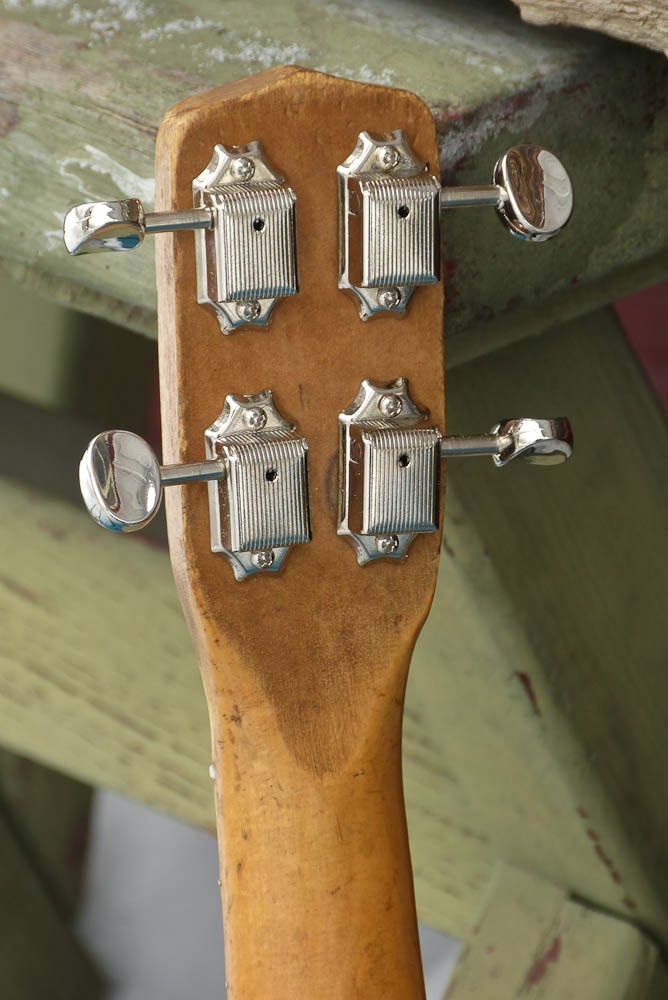c.1930/2014 Candy Tin Soprano Ukulele
Another snow day (yes, more, I can't believe it), another tin uke. This time it's a square candy tin and I've got an old "been around" soprano uke neck (late 30s Regal) bolted to a banjo-style dowel internally and then secured to the body. I love the sound of this thing fingerpicked or used for lead lines as it gets a sort of sweet, resonant, lush sound -- but if you strum it hard a punchy, spanky, bluesy-sort of overdrive goes on.
On this uke, I bolted the (vintage, parts-bin) bridge down to the top and compared to my previous cookie tin ukes that used a floating bridge (banjo style), this top-mounted more "regular uke" style stringing mellows out the tone a little bit.
I know friction pegs would have looked more period, but I like the idea of these tin ukes as being good travelers and this means the player won't need to bring a screwdriver along for the ride if the weather fluctuates a lot. The nut is some spare plastic material I had in my bin.
Original brass frets -- they got a light leveling/dressing.
For a "soundhole" I punched some holes in the darker area of the image roughly where a soundhole might be on a wood-bodied uke. Note the parts-bin condition of the parts-bin bridge! The saddle slot got back-filled with some glue and rosewood dust and I installed this simple metal round saddle which I thought appropriately grungy for the design.
I mean... you can either go two ways when building something silly like this: start out fresh with cleaner, newer materials or build something that might have been put together 60 years ago... I think my choice was obvious.
The little screws installed along the edges of the top are very necessary to avoid odd resonances and keep the lid down tight.
Yup, the tin is pre-aged... hah... I picked this one out at a local antiques mall because I figured it would fit in period-wise with my various parts-bin necks that've been hanging around.
The strap button's screw serves as an anchor for the supporting dowel that runs through the body.














Comments